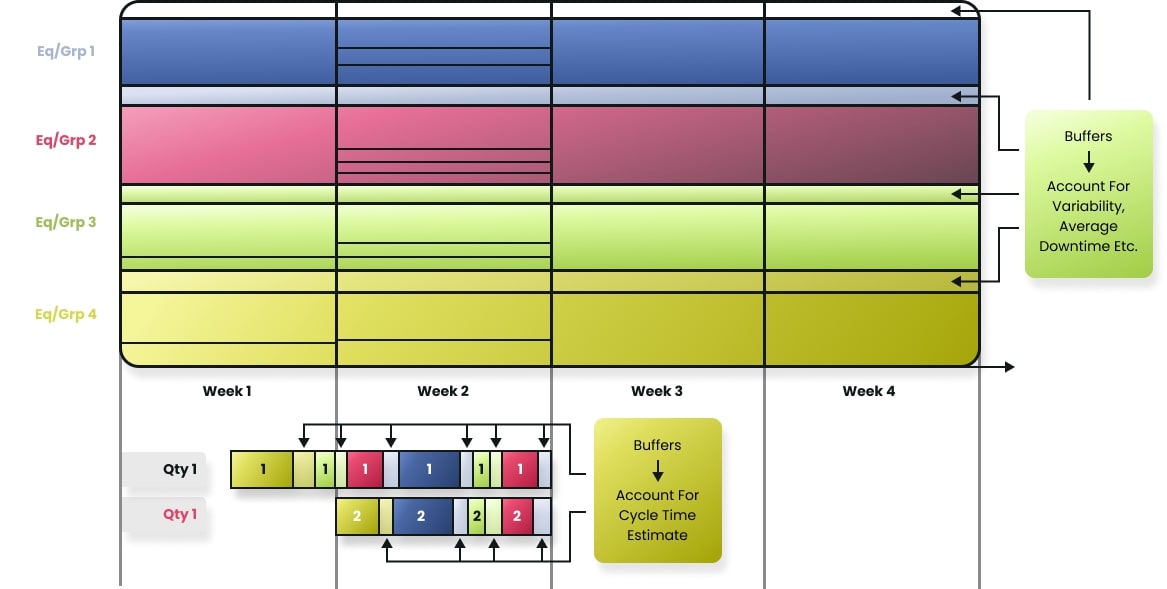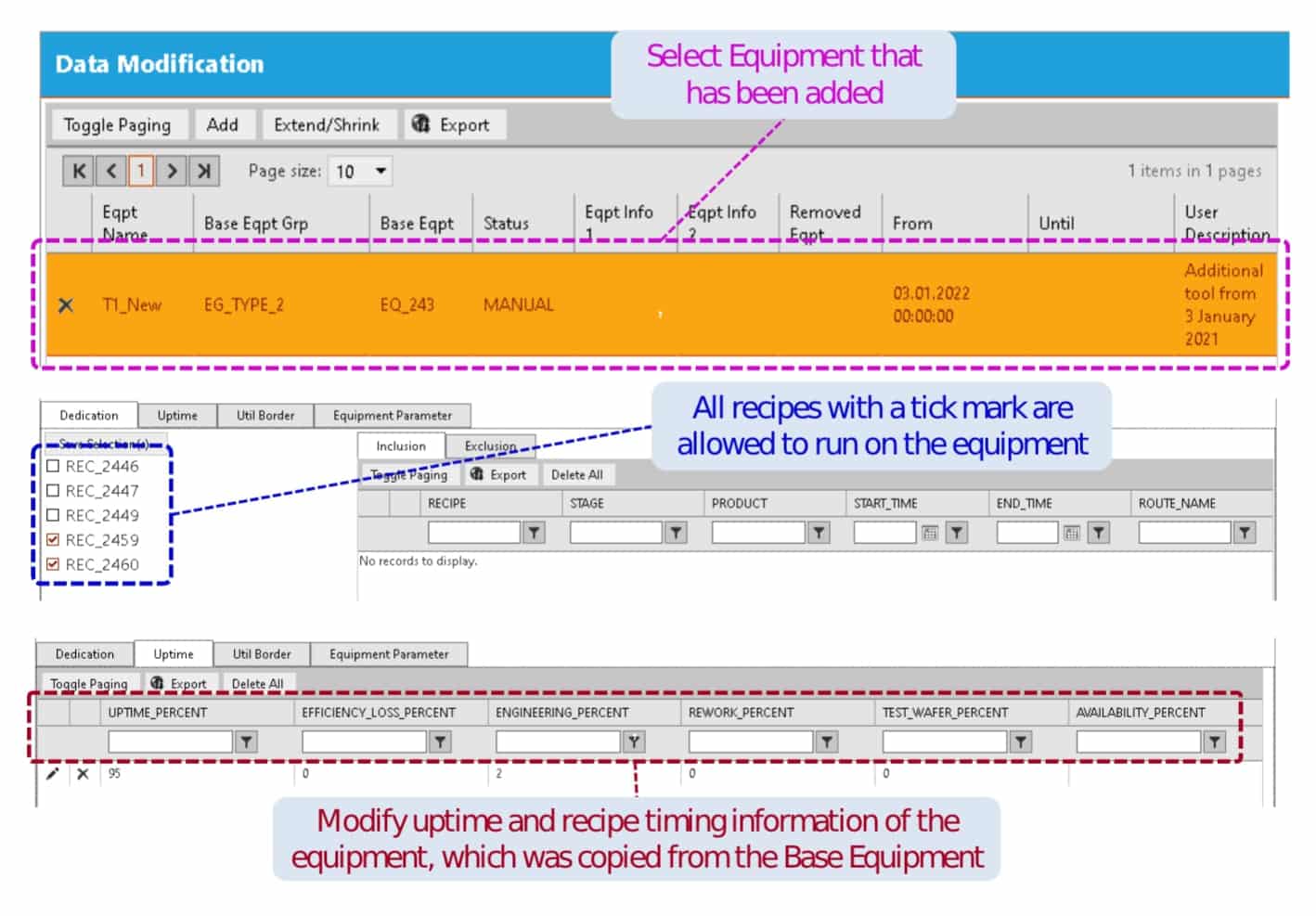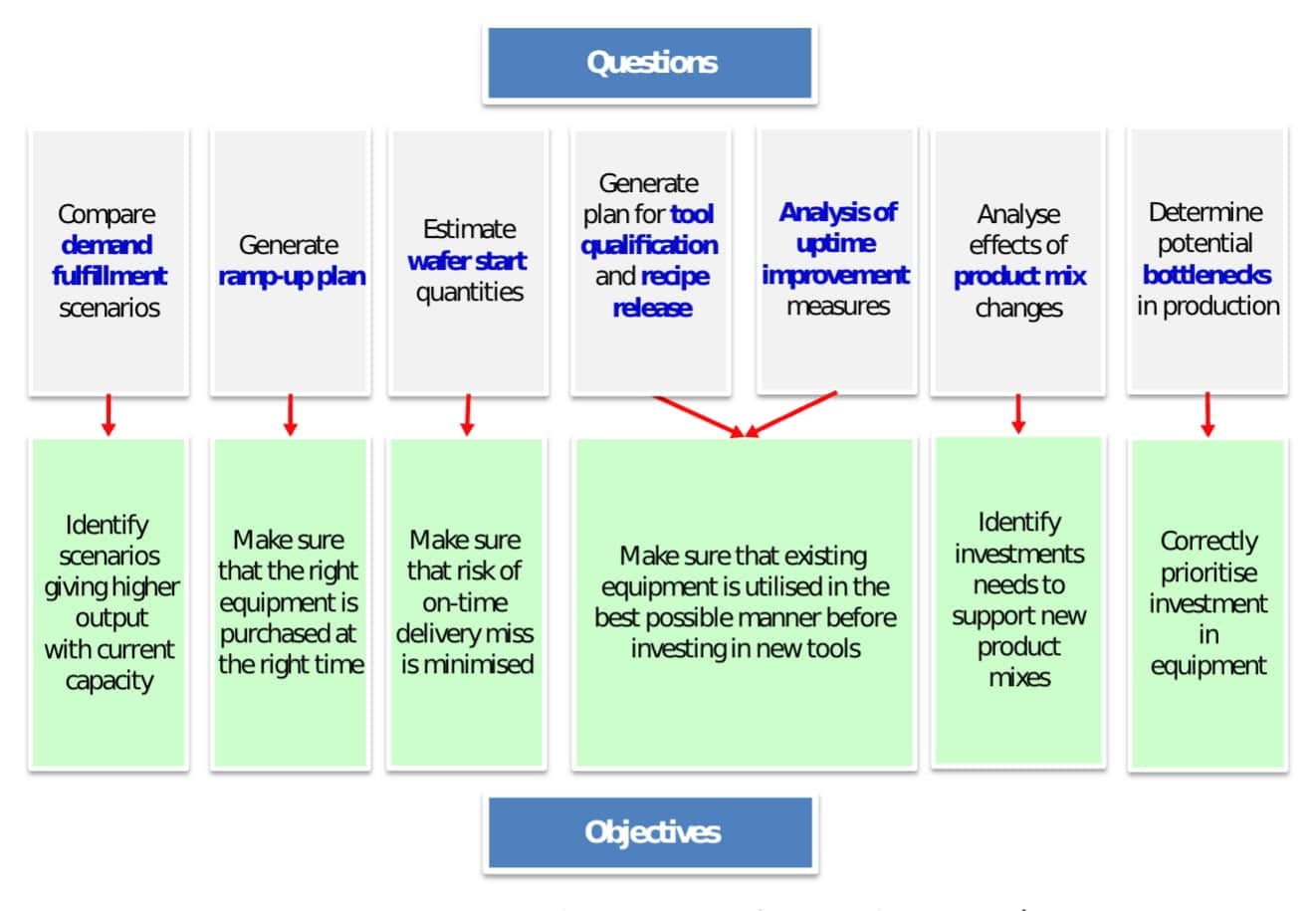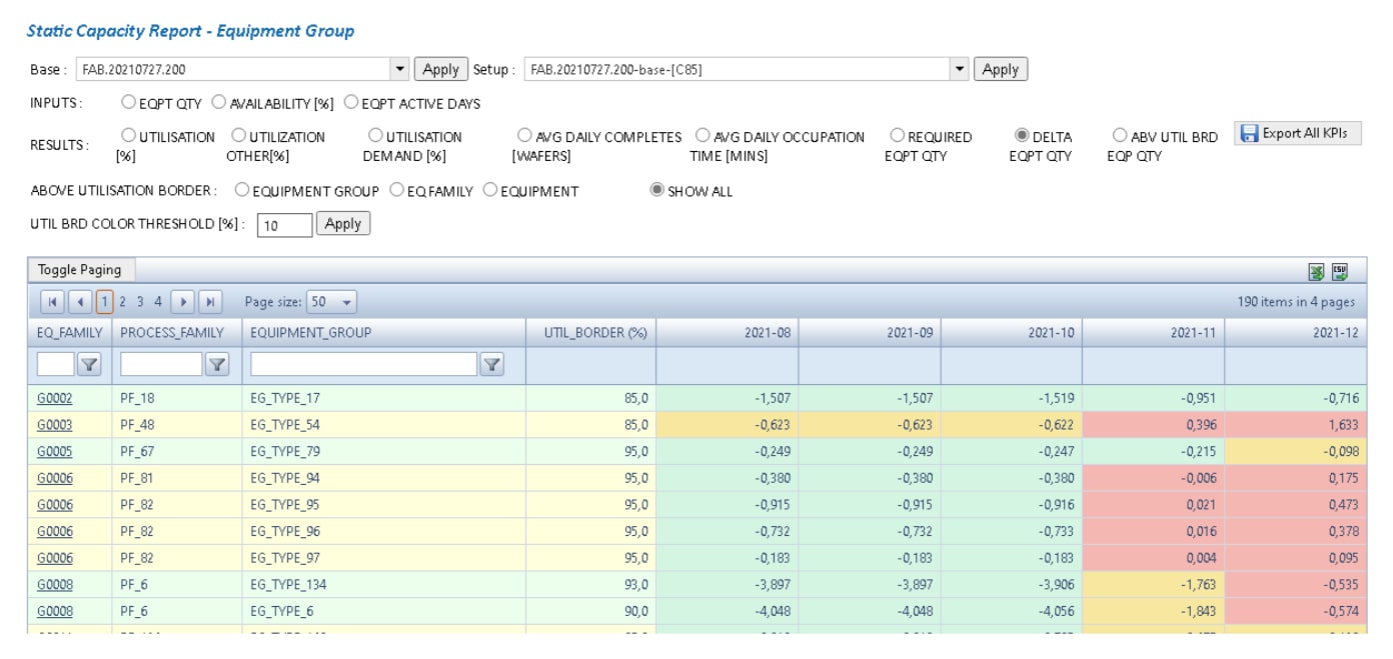- Home
- >
- D-SIMCON
- >
- D-SIMCON Static Capacity Engine
D-SIMCON Static Capacity Engine
Advanced Planning Solution for Semiconductor Capacity Planning

CHALLENGES
- Constraint-based production planning (such as simulation) can be very time-consuming.
- Optimised capacity plan needs to be generated with as few iterations as possible.
- Many Semiconductor Manufacturers are still using inhouse developed / Excel-based solutions for production planning.
- Input data changes and scenarios need to be managed consistently, especially when several planners are involved.
- Production cycle times typically span up to several months.
- Cycle times need to be considered for allocation of production quantities to capacity planning (weekly or monthly) time buckets.
Solution
- D-SIMCON Static Capacity Engine is a comprehensive, easy-to-configure and powerful capacity and production planning solution specifically designed for Semiconductor Manufacturing.

Differentiators
- Use case based approach.

- Wafer fab specific constraints and equipment characteristics can be portrayed.
- Throughput dependency on the combination of products and layers.
- Alternative recipe mapping.
- Route branching with corresponding machine load.
- Details of equipment dedication to recipes, products and steps.
- More automated and systematic way of capacity planning.
- Centralised and standardised input data with automatic base project generation for consistent planning.
- Quickly adjust input data for what-if scenarios without modifying base data.
- Automatic balancing of product quantity allocations to tools within Equipment Groups.
- Highly scalable for concurrent generation of plans across multiple time buckets on cloud-based or on-premise parallel computing infrastructure.

CUSTOMER SUCCESSES
- Deployed by semiconductor manufacturers in Singapore, Europe, and the USA for both 200mm and 300mm fabs.
- Utilised by customers for sales target setting and capital investment assessment.
Benefits achieved
- Up to 5% capacity freed up at critical Equipment Groups.
- More accurate and realistic capacity planning.
